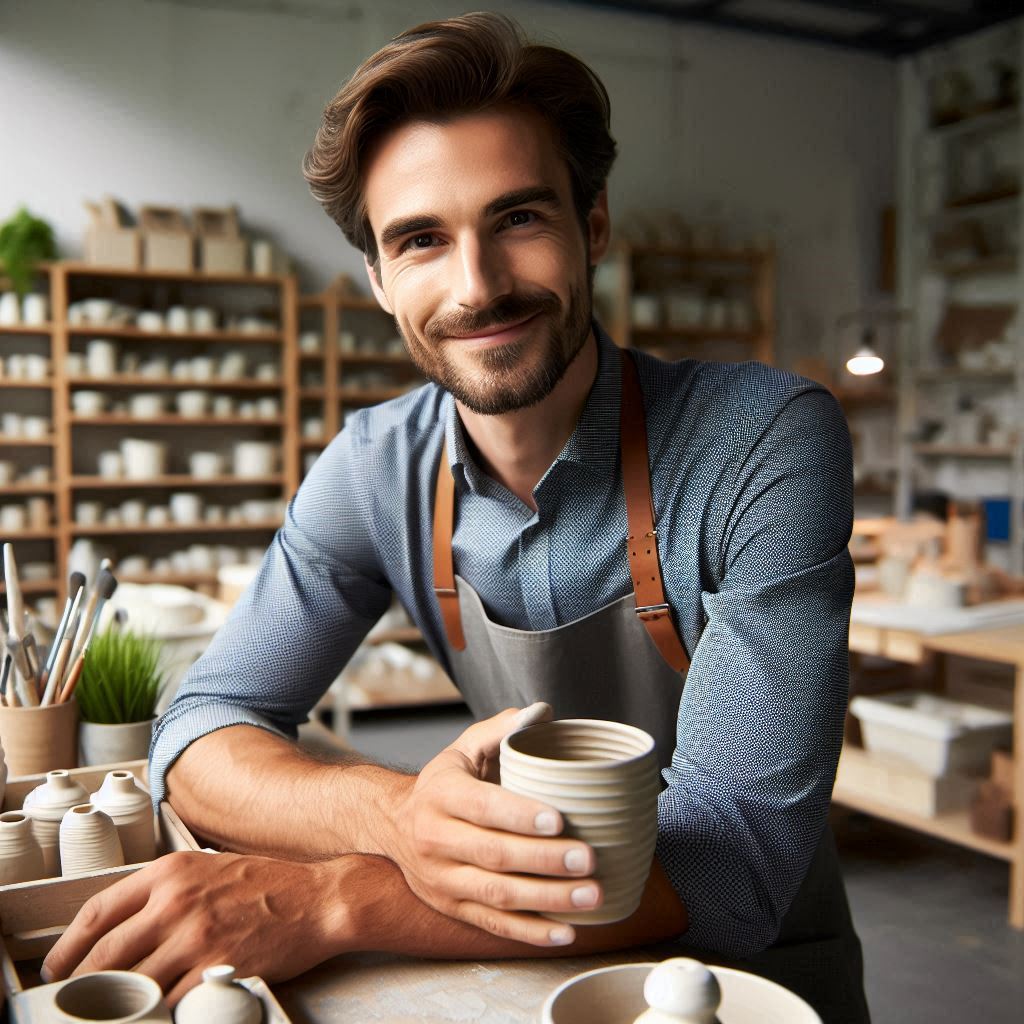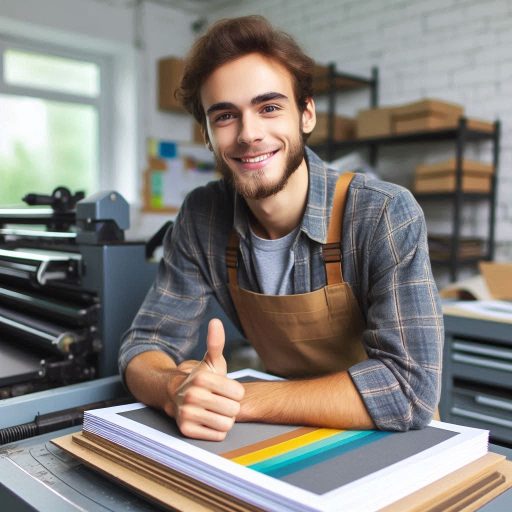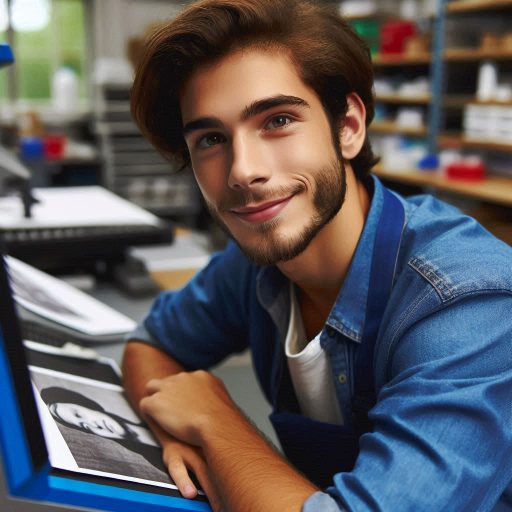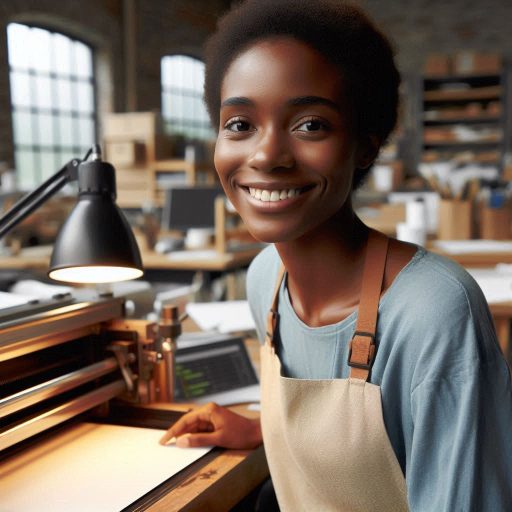Introduction
Maintaining a ceramic art studio is crucial for optimal creativity and productivity.
Artists benefit from a well-maintained studio by having a clean and organized space.
To ensure your studio remains in top condition, consider the following key tips:
Regular Cleaning and Organization
Clean your workspace regularly to prevent dust buildup and maintain a clutter-free environment.
Organize tools and materials systematically for easy access and improved workflow.
Proper Ventilation
Install proper ventilation systems to ensure a healthy indoor air quality.
Good ventilation helps to remove fumes and dust generated during art-making processes.
Equipment Maintenance
Regularly inspect and maintain your kiln, wheels, and other ceramic equipment.
Follow manufacturer guidelines to ensure proper functioning and prevent breakdowns.
Safe Handling of Materials
Adhere to safety protocols when handling glazes, clay, and other materials.
Wear protective gear such as gloves and masks to prevent skin and respiratory issues.
Storage Solutions
Invest in proper storage solutions to keep your supplies organized and protected.
Use airtight containers for clay to prevent drying out and maintain workability.
Invest in Quality Tools
Purchase high-quality tools and equipment that are durable and long-lasting.
Investing in the right tools will save you time, money, and frustration in the long run.
Regular Maintenance Checks
Schedule regular maintenance checks for your studio equipment and tools.
Address any issues promptly to prevent disruptions to your creative process.
Continuous Learning and Improvement
Stay updated on the latest techniques and trends in ceramic art.
Attend workshops, classes, and exhibitions to enhance your skills and knowledge.
Organize and clean regularly
Importance of Organizing and Cleaning Regularly
Keeping your ceramic art studio organized and clean is crucial for a productive and efficient workspace.
Transform Your Career Today
Unlock a personalized career strategy that drives real results. Get tailored advice and a roadmap designed just for you.
Start NowIt not only helps in maintaining the aesthetics of the studio but also improves your overall workflow.
Here are some key reasons why you should prioritize organization and cleanliness:
- Enhances creativity and focus: A clutter-free and clean environment can boost your creativity and help you stay focused on your art projects.
- Improves safety: An organized studio reduces the risk of accidents and injuries by eliminating tripping hazards and ensuring that all tools and materials are properly stored.
- Increases efficiency: Knowing where everything is located saves time and energy, allowing you to work more efficiently and effectively.
Tips for Decluttering and Creating a Functional Layout
Here are some practical tips to help you declutter your ceramic art studio and create a functional layout:
- Start with small tasks: Tackle one area at a time to prevent feeling overwhelmed and gradually work your way through the entire studio.
- Sort and categorize: Separate items into different categories such as tools, materials, finished pieces, and unfinished projects to make it easier to organize them.
- Donate or discard unused items: If you haven’t used something in a long time or it no longer serves a purpose, consider donating or throwing it away to free up space.
- Invest in storage solutions: Utilize shelves, cabinets, bins, and organizers to store your supplies neatly and keep them easily accessible.
- Create designated work areas: Designate specific zones for different tasks such as clay preparation, glazing, and firing to streamline your workflow.
Setting Aside Time for Cleaning and Organizing Tasks
To maintain the cleanliness and organization of your ceramic art studio, it’s essential to establish a regular cleaning schedule.
Here are some tips to help you stay on top of cleaning and organizing tasks:
- Plan a weekly cleaning routine: Set aside a specific day or time each week to clean and organize your studio to prevent clutter from accumulating.
- Delegate tasks: If you have a team or assistants, assign specific cleaning and organizing tasks to divide the workload and ensure efficiency.
- Use cleaning supplies: Keep essential cleaning supplies such as wipes, disinfectants, and brushes handy to quickly clean up spills and messes.
- Regularly inspect and maintain equipment: Check your equipment regularly for any damage or malfunctions and address them promptly to avoid disruptions in your work.
- Reward yourself: Celebrate your efforts in maintaining a clean and organized studio by treating yourself to something you enjoy after completing your weekly cleaning tasks.
By following these tips and making cleanliness and organization a priority in your ceramic art studio, you’ll create a welcoming and productive environment that enhances your creativity and enjoyment of the artistic process.
Read: Ceramic Art as a Therapeutic Practice
Proper storage for materials and tools
Proper storage is crucial for maintaining the efficiency and organization of your ceramic art studio.
Here are some key points to consider:
Significance of storing ceramic materials and tools properly
Storing ceramic materials and tools properly helps prevent damage, loss, or misplacement.
It also contributes to a safer work environment.
Investing in storage solutions like shelves, cabinets, and containers
Investing in quality storage solutions is essential for keeping your studio organized.
Shelves, cabinets, and containers can help maximize space and prevent clutter.
Tips on labeling and categorizing items for easier access
Labeling and categorizing items can streamline your workflow and make it easier to locate specific materials or tools when needed.
Use clear, descriptive labels and keep similar items together.
By implementing these storage strategies, you can create a more efficient and productive ceramic art studio.
Read: Printmaking Techniques: Monotype Printing
Maintain equipment and machinery
It is essential to regularly maintain your ceramic art studio’s equipment and machinery to ensure they function efficiently and last a long time.
The necessity of regular maintenance
Regular maintenance of equipment such as kilns and pottery wheels is crucial for preventing breakdowns and ensuring optimal performance.
Regularly inspecting these machines for any signs of wear and tear can help you catch issues early on and prevent costly repairs down the line.
Transform Your Career Today
Unlock a personalized career strategy that drives real results. Get tailored advice and a roadmap designed just for you.
Start NowCreating a maintenance schedule and sticking to it can help you stay on track and ensure that your equipment is always in top condition for use.
Offer guidance on cleaning and servicing machinery
To prolong the lifespan of your equipment, it’s important to clean and service them regularly.
For kilns, make sure to clean out any debris, such as glaze drips or leftover clay, that can accumulate over time and cause issues with firing.
For pottery wheels, clean the wheel head and ensure that all moving parts are well lubricated to prevent friction and wear.
Stress the importance of following manufacturer instructions
Manufacturers provide detailed instructions on how to properly maintain and service their equipment.
Following these instructions to the letter can help you avoid voiding warranties and ensure that your machines are well taken care of.
Be sure to familiarize yourself with the specific maintenance requirements for each piece of equipment in your studio and adhere to them diligently.
Read: The History and Evolution of Ceramic Art

Control temperature and humidity levels
Impact of temperature and humidity on ceramic work
Maintaining optimal temperature and humidity levels in your ceramic art studio is crucial for quality work.
Temperature fluctuations can affect the drying and firing processes of your ceramics.
If it’s too hot or too cold, it can lead to cracks, warping, or uneven drying.
Similarly, high humidity can cause issues like bloating or bubbling in the glaze.
Controlling these factors ensures your ceramics come out as intended.
Tips on regulating these factors in the studio to ensure optimal conditions
To regulate temperature, use an air conditioner or heater to keep your studio within the recommended range.
Most ceramic work benefits from a stable environment between 60-75°F (15-24°C).
Install a thermostat to monitor and adjust the temperature easily.
This helps in maintaining consistency during various stages of your work, from drying to firing.
Using tools like dehumidifiers and air conditioners to control the environment
Humidity control is equally important.
Excessive moisture in the air can interfere with the drying process, causing clay to remain too soft and susceptible to deformation.
Use a dehumidifier to keep the humidity levels in check.
Transform Your Career Today
Unlock a personalized career strategy that drives real results. Get tailored advice and a roadmap designed just for you.
Start NowAim for a humidity range of 40-60% to ensure proper drying and prevent issues with glaze application.
Additionally, consider using a hygrometer to measure humidity levels accurately.
Place it in different areas of your studio to identify any fluctuations and adjust your dehumidifier settings accordingly.
Regularly check and maintain your climate control equipment to ensure it functions properly.
By controlling temperature and humidity, you create an ideal environment for your ceramics.
This attention to detail can significantly enhance the quality and longevity of your art.
Embrace these practices to ensure every piece you create meets your artistic standards.
Read: Exploring Abstract Printmaking Techniques
Implement safety protocols
Running a ceramic art studio comes with its own set of challenges, one of the most important being safety.
Ensuring the well-being of yourself and anyone who enters your studio should be a top priority.
By implementing safety protocols, you can create a secure environment for everyone involved.
Importance of safety measures
It’s crucial to emphasize to everyone in the studio the significance of following safety measures at all times.
Whether it’s wearing protective gear or properly storing hazardous materials, each individual must understand the potential risks involved in working with ceramics.
Guidelines on handling hazardous materials
Make sure that everyone in the studio knows how to handle hazardous materials properly.
This includes storing chemicals in designated areas, using ventilation systems when necessary, and disposing of waste responsibly.
By educating your team on best practices, you can minimize the risk of accidents.
Using protective gear
Protective gear such as gloves, goggles, masks, and aprons are essential when working with ceramics.
Make sure that these items are readily available in the studio and that everyone knows how to use them correctly.
Encourage a culture of safety by ensuring that protective gear is worn at all times during work hours.
Recommend having a first aid kit
Accidents can happen, no matter how careful you are.
Transform Your Career Today
Unlock a personalized career strategy that drives real results. Get tailored advice and a roadmap designed just for you.
Start NowMake sure to have a fully stocked first aid kit in the studio at all times.
Include basic supplies such as bandages, antiseptic wipes, and pain relievers.
Additionally, make sure that everyone knows where the kit is located and how to use its contents in case of an emergency.
Have an emergency plan in place
In the event of an unexpected situation, having an emergency plan can be a lifesaver.
Create a plan that outlines steps to take in case of a fire, chemical spill, or any other emergency.
Make sure that everyone in the studio is aware of the plan and knows their role in executing it effectively.
By implementing these safety protocols in your ceramic art studio, you can create a secure and productive environment for yourself and others.
Remember that when it comes to safety, it’s better to be proactive rather than reactive.
Prioritize safety in your studio, and you’ll create a space where creativity can thrive without compromising well-being.
Invest in quality cleaning products
Significance of using the right cleaning products for ceramic surfaces
Maintaining a clean ceramic art studio is crucial for both safety and the quality of your work.
Using the right cleaning products ensures that your tools, workspaces, and finished pieces stay in top condition.
First, select cleaning products designed specifically for ceramic surfaces.
Ceramic glazes and clays can be sensitive to harsh chemicals, so choose gentle yet effective cleaners.
Avoid products with abrasives that can damage your ceramics.
Opt for pH-balanced, non-toxic cleaners that won’t harm your studio environment.
Specific products for cleaning tools, workspaces, and finished pieces
For cleaning tools, such as brushes and sculpting instruments, use specialized brush cleaners and non-abrasive soaps.
These products help remove residue without damaging the bristles or surfaces of your tools.
Soak brushes in warm, soapy water to loosen hardened materials, then gently scrub with a soft brush or cloth.
When it comes to your workspace, keep it clean and organized with a quality all-purpose cleaner.
This cleaner should be suitable for various surfaces, including counters, floors, and storage areas.
Transform Your Career Today
Unlock a personalized career strategy that drives real results. Get tailored advice and a roadmap designed just for you.
Start NowEnsure that it effectively removes clay and glaze residues without leaving harmful residues behind.
For finished pieces, use a soft, damp cloth or sponge to clean ceramics.
Avoid using harsh chemicals or abrasive materials that can scratch or dull the surface.
If needed, employ a mild ceramic cleaner that is safe for use on delicate finishes.
Tips on creating a cleaning schedule to maintain hygiene in the studio
Creating a cleaning schedule is essential for maintaining studio hygiene.
Set aside specific times each week for deep cleaning, including tools, workspaces, and equipment.
Daily cleaning tasks should include wiping down surfaces and removing any clay or glaze spills promptly.
This routine helps prevent build-up and maintains a safe, efficient work environment.
By investing in quality cleaning products and following a consistent cleaning schedule, you ensure a clean and organized studio, enhancing both your artistic process and the longevity of your materials.
Seek professional help when needed
Maintaining a ceramic art studio requires attention to detail and sometimes professional expertise.
Complex maintenance tasks can exceed an artist’s skill set.
Seeking help from experts ensures proper repairs and upkeep.
Encouraging artists to seek assistance from experts for complex maintenance tasks
Artists should not hesitate to consult professionals for intricate issues.
Problems like kiln malfunctions or advanced equipment repairs often need specialized knowledge.
Expert technicians can diagnose and fix issues more effectively than a DIY approach.
This approach helps avoid costly mistakes and downtime in your studio.
List of professionals or resources that can help with equipment repair and maintenance
Create a list of trusted professionals and resources for studio maintenance.
This list might include kiln repair specialists, equipment servicing companies, or even local ceramic supply stores with repair services.
Online forums and ceramic art communities also offer recommendations.
Networking with other artists can lead to valuable referrals for reliable services.
Transform Your Career Today
Unlock a personalized career strategy that drives real results. Get tailored advice and a roadmap designed just for you.
Start NowImportance of addressing issues promptly to avoid further damage
Addressing maintenance issues quickly is crucial to prevent further damage.
Small problems can escalate if left unattended, leading to more significant repairs and higher costs.
Prompt action can save time and money in the long run.
Regularly inspect your equipment and studio environment to catch issues early.
By prioritizing maintenance, you ensure your studio remains a functional and inspiring space for your art.
In summary, seeking professional help when needed keeps your studio in top shape.
Expert assistance prevents costly repairs, while a proactive approach to maintenance safeguards your creative environment.
Conclusion
Having a well-maintained ceramic art studio is crucial for artists to unleash their creativity and maintain productivity.
By following the tips discussed in this post, artists can ensure their studio remains in top condition.
Regular cleaning, organizing tools, maintaining equipment, and creating a comfortable environment are key points to remember.
A clean and organized studio not only creates a conducive environment for creativity but also improves overall workflow.
Artists are encouraged to implement these tips to enhance their artistic process and elevate their ceramic art creations.
Remember, a well-maintained studio is a reflection of your commitment to your craft and can significantly impact your artistic journey.
[E-Books for Sale]
The Big Book of 500 High-Paying Jobs in America: Unlock Your Earning Potential
$19.99 • 500 High-Paying Jobs • 330 pages
Explore 500 high-paying jobs in America and learn how to boost your career, earn more, and achieve success!
See All 500 High-Paying Jobs of this E-Book
1001 Professions Without a Degree: High-Paying American Jobs You Can Start Now
$19.99 • 1001 Professions Without a Degree • 174 pages
Discover 1001 high-paying jobs without a degree! Unlock career tips, skills, and success strategies for just $19.99!




